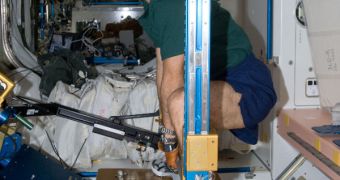Investigators believe that we are still many years away from gaining the ability to procreate in space, a condition that is absolutely necessary if we are to explore the Universe deeper and farther than before.
But scientific analysis suggests that exposure to microgravity influences the behavior of stem cells in a very negative manner, which cannot be compensated for using current technological means.
Over the years, with more study, we may become capable of doing so, scientists think, but we first need to learn how to cancel the effects of microgravity on astronauts living about 6 months in space.
Mission specialists on the International Space Station (ISS) tend to exhibit a host of negative side-effects from their prolonged stays on the orbital facility.
These consequences include loss of bone and muscle tissue, irregular heart beats and nail delamination for astronauts who spend hours in space during extra-vehicular activities (EVA).
The main method to defend against effects such as these is for the mission participants to engage in daily training routines, meant to keep their muscle and bone mass at health levels.
If we can exceed these limitations, then maybe learning how to harness the development of stem cells in microgravity will follow naturally. However, the efforts are not to be taken lightly.
The thing about stem cells is that they are the most important type in the entire human body. All other types of cells differentiate from them, and so any irregularities would be perpetuated indefinitely.
Additionally, stem cells play a critical role in repairing damaged tissue and organs, by promoting the growth of new cells to replace the lost ones, Space reports.
“Our research is headed toward creating countermeasures that can be utilized by biomedical intervention for astronauts,” explains researcher Helder Marcal.
The expert holds an appointment as a tissue engineer at the University of New South Wales, in Australia, where the new investigation was led.
In the experiments, embryonic stem cells were kept in a specialized machine mimicking microgravity for 28 days, while nourished with oxygen and other necessary substances.
Researchers learned that 64 percent of the proteins these cells normally produce were different than the same type of proteins created in normal gravity.
The study also revealed that the stem cells produced more bone-degrading proteins, while at the same time making smaller amounts of antioxidant molecules, which destroy chemicals that can harm DNA.
“The simulated microgravity experiments we are investigating don't seem to suggest a very positive outcome,” Marcal says.
“Humans may have to consider that in the not so distant future, genetic engineering our bodies may the way forward if we are to explore planets in our solar system,” he adds.
“However, this raises other ethical and moral issue,” the expert concludes.

 14 DAY TRIAL //
14 DAY TRIAL //